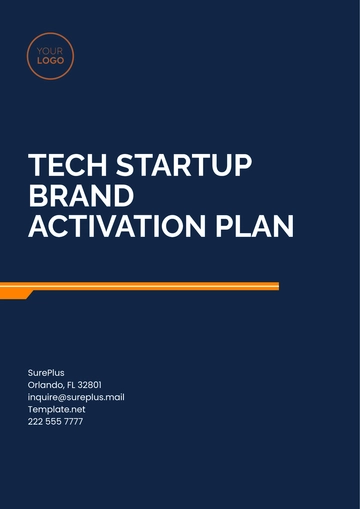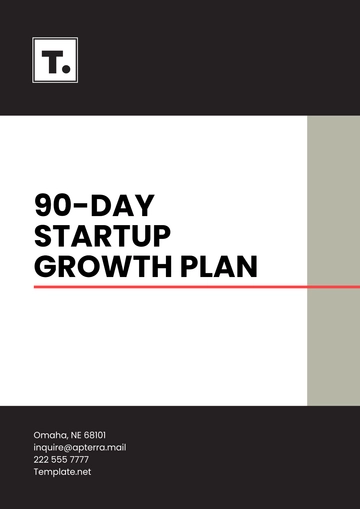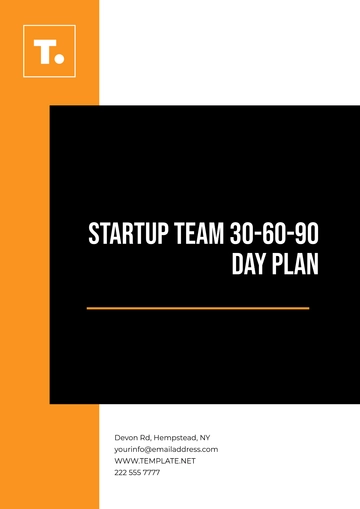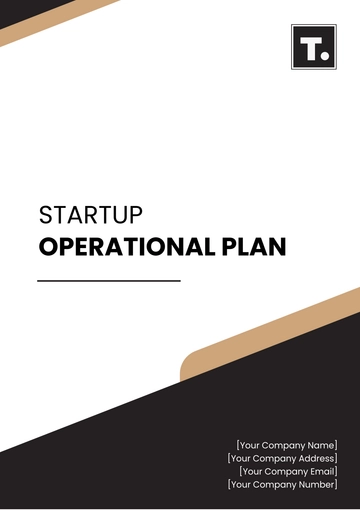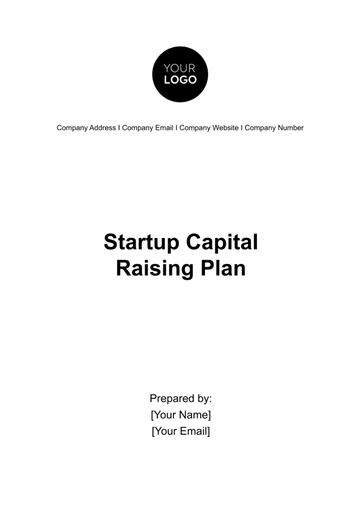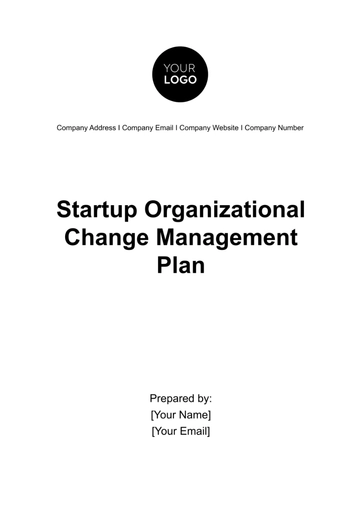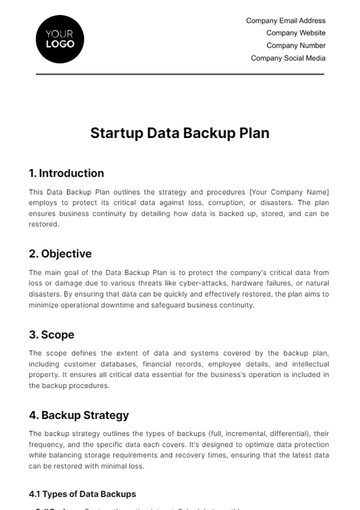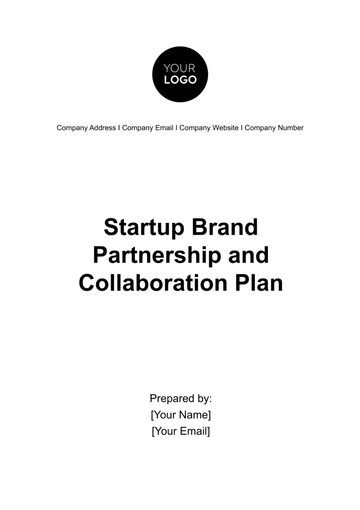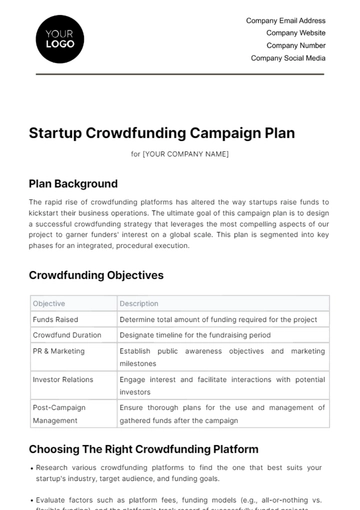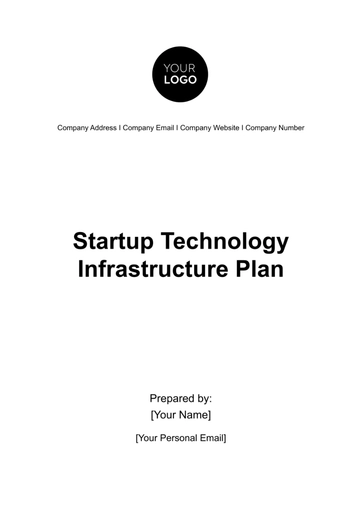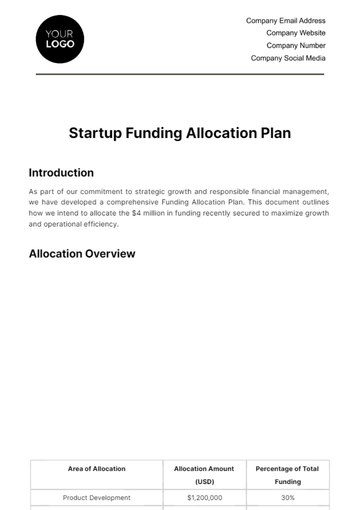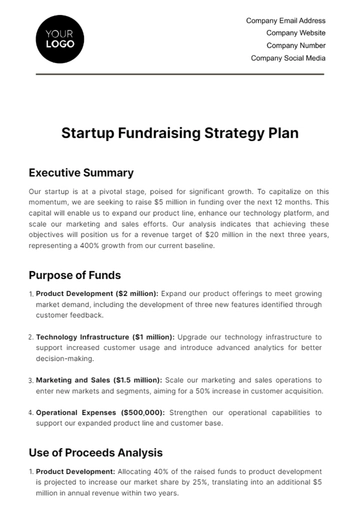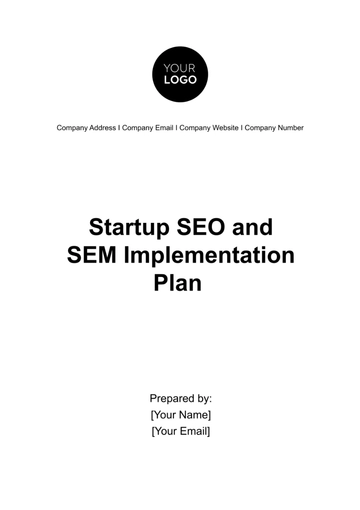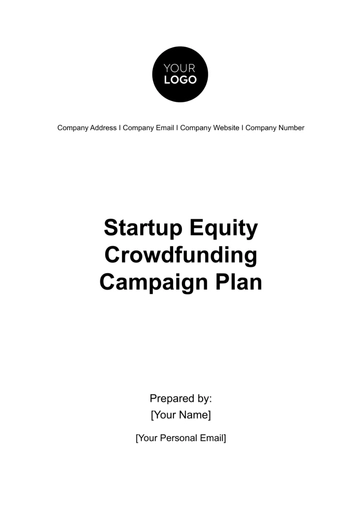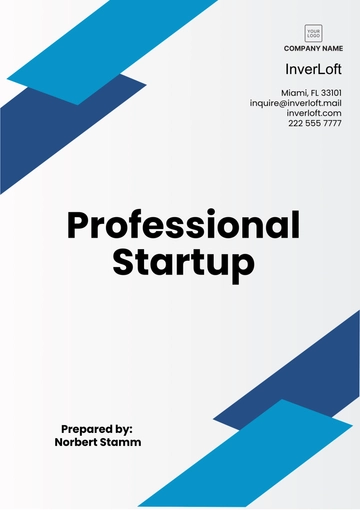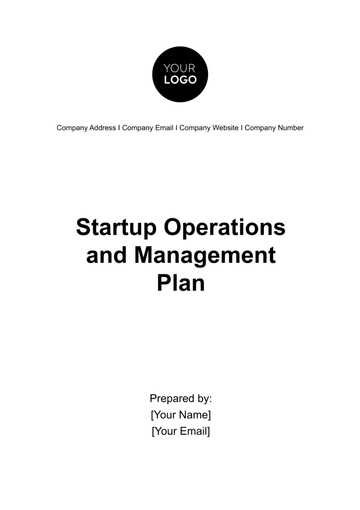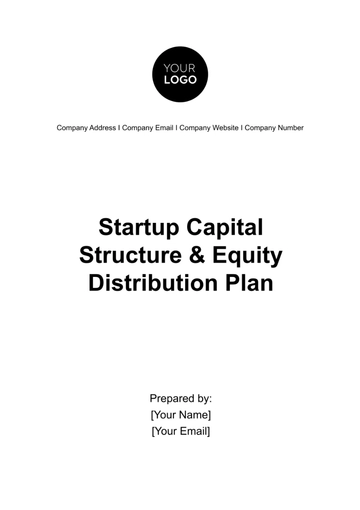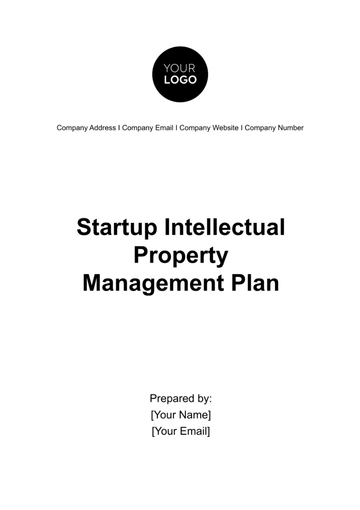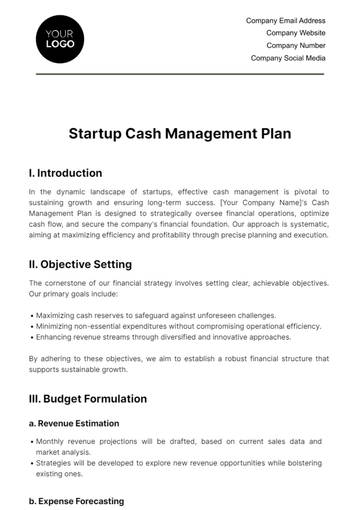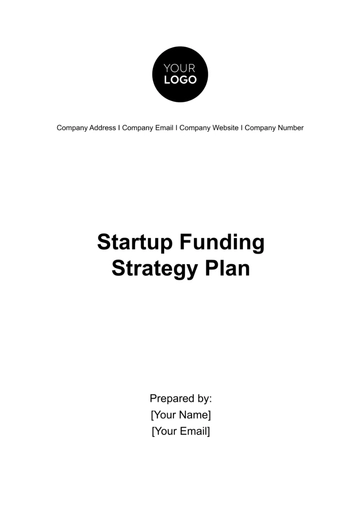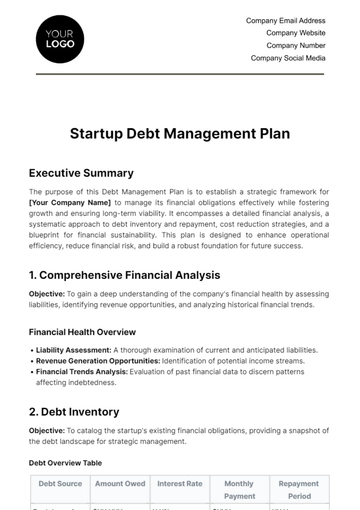Free Startup 5-Year Plan

1. Executive Summary
1.1 Overview
The [Your Company Name] Startup 5-Year Plan outlines our strategy for launching and growing our startup over the next five years. This plan includes detailed market analysis, financial projections, operational strategies, and key performance indicators (KPIs). Our objective is to establish a solid foundation for growth, adapt to market changes, and achieve long-term sustainability through 2050 and beyond.
1.2 Vision and Mission Statement
1.2.1 Vision Statement
Our vision is to become a pioneering leader in the renewable energy industry, delivering innovative solutions that transform how people harness and utilize clean energy. We aim to set new industry benchmarks by developing cutting-edge solar technology and advanced energy storage systems. Our goal is to contribute positively to both the environment and society by promoting sustainable energy practices and reducing carbon footprints globally.
1.2.2 Mission Statement
[Your Company Name] is dedicated to providing high-quality solar panels and energy storage systems that meet the dynamic needs of our customers. We focus on excellence, innovation, and sustainability, striving to exceed expectations through superior product performance and customer service. By continuously advancing our technology and fostering a culture of continuous improvement, we aim to lead the transition to a cleaner, more sustainable future.
1.3 Objectives and Goals
1.3.1 Short-Term Objectives (Years 1-2)
Market Penetration: Establish our brand in the local market with a target market share of 5% by the end of Year 2.
Product Development: Complete and launch our flagship product/service, aiming for a customer satisfaction rate of 85% or higher.
Revenue Milestones: Achieve a break-even point within 18 months and target a 20% annual revenue growth rate.
Team Building: Hire key personnel, including a product manager, sales director, and marketing strategist, by the end of Year 1.
1.3.2 Mid-Term Goals (Years 3-4)
Market Expansion: Enter regional markets and aim to capture a 10% market share in these areas by the end of Year 4.
Product Diversification: Introduce two new product lines based on market research and customer feedback, aiming for a 15% increase in overall revenue.
Revenue and Profitability: Increase annual revenue by 50% and achieve a net profit margin of 15% by the end of Year 4.
Operational Efficiency: Implement process improvements to reduce operational costs by 10% and enhance productivity.
1.3.3 Long-Term Vision (Year 5 and Beyond)
Global Presence: Expand into international markets with a focus on North America and Europe, targeting a 5% global market share by 2050.
Innovation Leadership: Invest in R&D to drive innovation, aiming for at least one new technological advancement or product innovation annually.
Sustainable Growth: Achieve a sustainable annual growth rate of 20%, with a focus on maintaining high levels of customer satisfaction and employee engagement.
Social Responsibility: Implement CSR initiatives, including environmental sustainability programs and community outreach projects.
2. Market Analysis
2.1 Industry Overview
The renewable energy industry is poised for significant growth, driven by technological advancements and evolving consumer preferences. The market is expected to expand at a compound annual growth rate (CAGR) of 7% from 2025 to 2050.
Key Trends:
Technological Advancements: Adoption of AI, machine learning, and automation is revolutionizing the industry, offering opportunities for enhanced efficiency and innovation.
Consumer Behavior: Increasing demand for personalized and eco-friendly products is influencing market dynamics.
Regulatory Changes: New regulations on data privacy and sustainability are shaping industry standards and operational practices.
2.2 Target Market
2.2.1 Market Segmentation
Demographic Segmentation: Targeting millennials (ages 25-40) and Generation Z (ages 18-24) who are tech-savvy and prioritize sustainability.
Geographic Segmentation: Initial focus on urban areas with plans to expand into suburban and rural markets.
Psychographic Segmentation: Catering to consumers who value premium, innovative, and environmentally responsible products.
2.2.2 Market Size and Growth Projections
The market for high-quality solar panels and energy storage systems is projected to grow from $500 million in 2024 to $1.5 billion by 2025 and $3 billion by 2030, driven by increasing consumer demand and technological advancements.
Year | Market Size (in $ Billion) |
|---|---|
2050 | 0.50 |
2051 | 1.50 |
2055 | 3.00 |
2.2.3 Competitive Analysis
Direct Competitors: Companies such as [Competitor A] and [Competitor B] hold significant market shares with established brands. They focus on similar product features and target demographics.
Indirect Competitors: Alternatives like traditional fossil fuel-based energy sources provide substitute solutions that cater to the same customer needs for electricity and power. These alternatives, while less environmentally friendly, continue to impact market dynamics by offering established infrastructure and often lower initial costs. Additionally, home battery storage systems from competitors offer backup power solutions that serve as a substitute for our advanced energy storage systems, potentially influencing customer choices and affecting our market position.
2.3 SWOT Analysis
2.3.1 Strengths
Innovative Technology: Cutting-edge technology that provides a competitive advantage.
Experienced Team: A team with a proven track record and expertise in renewable energy industry.
Strong Brand Identity: A compelling brand that resonates with target customers and builds trust.
2.3.2 Weaknesses
Limited Market Presence: New to the market with lower brand recognition compared to established players.
Resource Constraints: Limited initial financial and operational resources.
2.3.3 Opportunities
Emerging Markets: Potential to capture market share in growing and underserved regions.
Technological Advancements: Opportunities to leverage new technologies for product enhancement and operational efficiency.
2.3.4 Threats
Market Competition: Competition from established players and new entrants.
Economic Uncertainty: Potential impact of economic fluctuations on consumer spending and business operations.
3. Business Model and Strategy
3.1 Revenue Streams
3.1.1 Product Sales
Direct Sales: Revenue from sales of high-quality solar panels and energy storage systems through online platforms and retail outlets.
Wholesale: Revenue from bulk sales to distributors and retailers.
3.1.2 Subscription Models
Monthly/Annual Subscriptions: Recurring revenue from subscription-based services or memberships.
3.1.3 Licensing and Partnerships
Licensing Agreements: Revenue from licensing technology or intellectual property to other companies.
Strategic Partnerships: Income from partnerships with businesses or organizations for co-development or co-marketing initiatives.
3.2 Marketing and Sales Strategy
3.2.1 Branding and Positioning
Brand Development: Creating a strong and memorable brand identity through consistent messaging and visual elements.
Market Positioning: Positioning our product/service as a premium offering with unique benefits.
3.2.2 Marketing Channels
Digital Marketing: Leveraging social media, SEO, email marketing, and content marketing to reach target audiences.
Traditional Marketing: Utilizing print advertising, events, and public relations to build brand awareness.
3.2.3 Sales Strategy
Sales Process: Implementing a structured approach to lead generation, qualification, and conversion.
CRM Systems: Using CRM tools to manage customer relationships and track sales performance.
3.3 Operational Plan
3.3.1 Production and Supply Chain
Manufacturing: Partnering with manufacturers to produce [Your Product] efficiently and at scale.
Supply Chain Management: Developing processes to ensure timely delivery of materials and products.
3.3.2 Technology and Infrastructure
Technology Infrastructure: Investing in IT systems, software solutions, and cybersecurity measures to support business operations.
Operational Processes: Streamlining processes to enhance efficiency and reduce costs.
3.3.3 Human Resources
Talent Acquisition: Recruiting skilled professionals for key roles in management, sales, marketing, and technology.
Employee Development: Providing training and development opportunities to enhance employee skills and performance.
4. Financial Projections
4.1 Revenue Forecast
4.1.1 Sales Projections
Year | Revenue (in $ Million) |
|---|---|
Year 1 | 1.0 |
Year 2 | 2.5 |
Year 3 | 4.0 |
Year 4 | 6.0 |
Year 5 | 8.0 |
4.1.2 Expense Forecast
Expense Category | Amount (in $ Million) |
|---|---|
Operational Costs | 0.8 |
Marketing Expenses | 0.5 |
Production Costs | 1.0 |
4.2 Profit and Loss Statement
4.2.1 Net Income
Year | Net Income (in $ Million) |
|---|---|
Year 1 | 0.2 |
Year 2 | 0.5 |
Year 3 | 1.0 |
Year 4 | 1.8 |
Year 5 | 2.5 |
4.2.2 Profit Margins
Year | Gross Margin (%) | Net Margin (%) |
|---|---|---|
Year 1 | 20% | 10% |
Year 2 | 25% | 15% |
Year 3 | 30% | 20% |
Year 4 | 35% | 25% |
Year 5 | 40% | 30% |
4.3 Funding Requirements
4.3.1 Initial Funding
Seed Capital: $500,000 required for initial setup, including product development, marketing, and operational expenses.
4.3.2 Future Funding Rounds
Series A: Targeting $2 million in funding for scaling operations and market expansion in Year 2.
Series B: Planning for $5 million in funding for global expansion and R&D in Year 4.
5. Risk Management
5.1 Risk Identification
5.1.1 Market Risks
Competition: Risk of intense competition from established players and new entrants.
Economic Fluctuations: Impact of economic downturns on consumer spending and business operations.
5.1.2 Operational Risks
Supply Chain Disruptions: Potential disruptions in the supply chain affecting production and delivery.
Technology Failures: Risks related to technology failures or cybersecurity breaches.
5.1.3 Financial Risks
Funding Shortfalls: Risk of not securing sufficient funding for growth and expansion.
Cash Flow Issues: Potential cash flow problems affecting operational sustainability.
5.2 Risk Mitigation Strategies
5.2.1 Market Risk Mitigation
Competitive Analysis: Continuously monitor competitors and adapt strategies to maintain a competitive edge.
Diversification: Explore new markets and product lines to reduce dependency on a single revenue stream.
5.2.2 Operational Risk Mitigation
Supply Chain Management: Develop contingency plans and establish relationships with multiple suppliers.
Technology Investment: Invest in robust IT systems and cybersecurity measures to minimize risks.
5.2.3 Financial Risk Mitigation
Financial Planning: Maintain a comprehensive financial plan and regularly review cash flow projections.
Funding Strategy: Build strong relationships with investors and explore alternative funding sources.
6. Implementation Plan
6.1 Timeline and Milestones
6.1.1 Year 1
Q1: Finalize product development and launch marketing campaign.
Q2: Secure initial customers and achieve first revenue milestone.
Q3: Expand team and optimize operational processes.
Q4: Review performance and adjust strategies as needed.
6.1.2 Year 2
Q1: Focus on market penetration and build brand presence.
Q2: Initiate Series A funding round and expand product offerings.
Q3: Scale operations and enter new regional markets.
Q4: Evaluate progress and prepare for next growth phase.
6.1.3 Year 3-5
Year 3: Continue market expansion, introduce new products, and increase revenue.
Year 4: Secure Series B funding and expand internationally.
Year 5: Focus on innovation, achieve global market presence, and sustain growth.
6.2 Key Performance Indicators (KPIs)
6.2.1 Financial KPIs
Revenue Growth Rate: Targeting 20% annual growth.
Net Profit Margin: Aiming for a 30% net profit margin by Year 5.
6.2.2 Operational KPIs
Customer Acquisition Cost (CAC): Monitoring and optimizing CAC to ensure efficient marketing spend.
Customer Retention Rate: Targeting a retention rate of 80% or higher.
6.2.3 Marketing KPIs
Brand Awareness: Measuring brand recognition and engagement through surveys and social media metrics.
Lead Conversion Rate: Tracking the percentage of leads converted into paying customers.
6.3 Monitoring and Evaluation
6.3.1 Performance Reviews
Quarterly Reviews: Conduct quarterly performance reviews to assess progress against objectives and adjust strategies as needed.
Annual Reports: Prepare comprehensive annual reports detailing achievements, challenges, and financial performance.
6.3.2 Strategic Adjustments
Market Analysis: Regularly analyze market trends and competitive landscape to adapt strategies.
Feedback Mechanisms: Implement feedback mechanisms from customers, employees, and stakeholders to drive continuous improvement.
- 100% Customizable, free editor
- Access 1 Million+ Templates, photo’s & graphics
- Download or share as a template
- Click and replace photos, graphics, text, backgrounds
- Resize, crop, AI write & more
- Access advanced editor
Shape the future of your startup with the Startup 5-Year Plan Template from Template.net. This customizable template helps you outline your long-term goals and strategies. Editable in our AI Editor Tool, it’s perfect for guiding your startup’s growth and development. Download now and create a roadmap for your future success!
You may also like
- Finance Plan
- Construction Plan
- Sales Plan
- Development Plan
- Career Plan
- Budget Plan
- HR Plan
- Education Plan
- Transition Plan
- Work Plan
- Training Plan
- Communication Plan
- Operation Plan
- Health And Safety Plan
- Strategy Plan
- Professional Development Plan
- Advertising Plan
- Risk Management Plan
- Restaurant Plan
- School Plan
- Nursing Home Patient Care Plan
- Nursing Care Plan
- Plan Event
- Startup Plan
- Social Media Plan
- Staffing Plan
- Annual Plan
- Content Plan
- Payment Plan
- Implementation Plan
- Hotel Plan
- Workout Plan
- Accounting Plan
- Campaign Plan
- Essay Plan
- 30 60 90 Day Plan
- Research Plan
- Recruitment Plan
- 90 Day Plan
- Quarterly Plan
- Emergency Plan
- 5 Year Plan
- Gym Plan
- Personal Plan
- IT and Software Plan
- Treatment Plan
- Real Estate Plan
- Law Firm Plan
- Healthcare Plan
- Improvement Plan
- Media Plan
- 5 Year Business Plan
- Learning Plan
- Marketing Campaign Plan
- Travel Agency Plan
- Cleaning Services Plan
- Interior Design Plan
- Performance Plan
- PR Plan
- Birth Plan
- Life Plan
- SEO Plan
- Disaster Recovery Plan
- Continuity Plan
- Launch Plan
- Legal Plan
- Behavior Plan
- Performance Improvement Plan
- Salon Plan
- Security Plan
- Security Management Plan
- Employee Development Plan
- Quality Plan
- Service Improvement Plan
- Growth Plan
- Incident Response Plan
- Basketball Plan
- Emergency Action Plan
- Product Launch Plan
- Spa Plan
- Employee Training Plan
- Data Analysis Plan
- Employee Action Plan
- Territory Plan
- Audit Plan
- Classroom Plan
- Activity Plan
- Parenting Plan
- Care Plan
- Project Execution Plan
- Exercise Plan
- Internship Plan
- Software Development Plan
- Continuous Improvement Plan
- Leave Plan
- 90 Day Sales Plan
- Advertising Agency Plan
- Employee Transition Plan
- Smart Action Plan
- Workplace Safety Plan
- Behavior Change Plan
- Contingency Plan
- Continuity of Operations Plan
- Health Plan
- Quality Control Plan
- Self Plan
- Sports Development Plan
- Change Management Plan
- Ecommerce Plan
- Personal Financial Plan
- Process Improvement Plan
- 30-60-90 Day Sales Plan
- Crisis Management Plan
- Engagement Plan
- Execution Plan
- Pandemic Plan
- Quality Assurance Plan
- Service Continuity Plan
- Agile Project Plan
- Fundraising Plan
- Job Transition Plan
- Asset Maintenance Plan
- Maintenance Plan
- Software Test Plan
- Staff Training and Development Plan
- 3 Year Plan
- Brand Activation Plan
- Release Plan
- Resource Plan
- Risk Mitigation Plan
- Teacher Plan
- 30 60 90 Day Plan for New Manager
- Food Safety Plan
- Food Truck Plan
- Hiring Plan
- Quality Management Plan
- Wellness Plan
- Behavior Intervention Plan
- Bonus Plan
- Investment Plan
- Maternity Leave Plan
- Pandemic Response Plan
- Succession Planning
- Coaching Plan
- Configuration Management Plan
- Remote Work Plan
- Self Care Plan
- Teaching Plan
- 100-Day Plan
- HACCP Plan
- Student Plan
- Sustainability Plan
- 30 60 90 Day Plan for Interview
- Access Plan
- Site Specific Safety Plan

